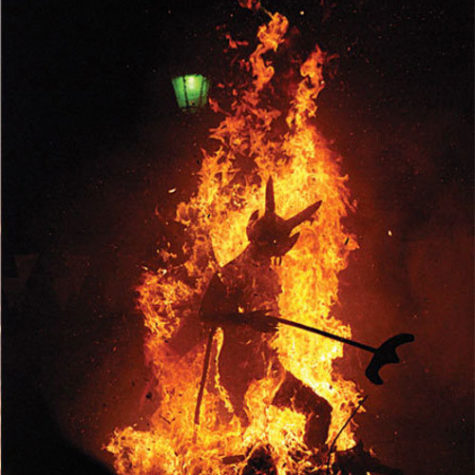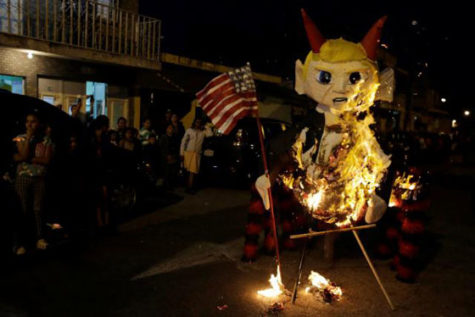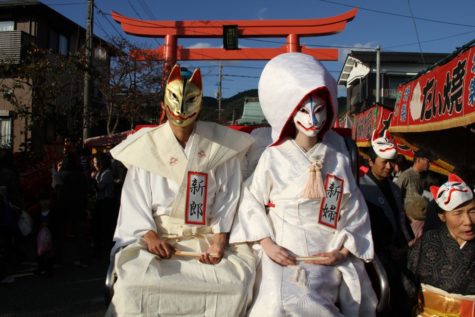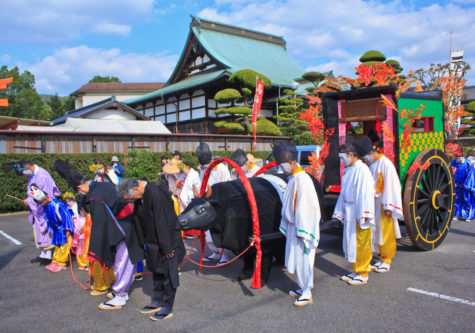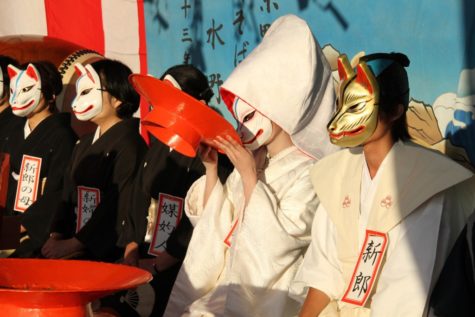Monthly Archives: November 2018
Burning the Devil or La Quema del Diablo is a tradition held every December 7, at 6:00 in the evening sharp, families build bonfires outside their homes and burn effigy of Satan. It is a tradition that many Guatemalans take part as a way to cleanse their home from devils that lurk in their home, creeping behind the furniture or hiding under the bed.
La quema del diablo can be traced to colonial time, a tradition that started since the 18th century. Held on the eve of the Feast of the Immaculate Conception and as a prelude to holiday season, those who could afford it adorns the fronts of their houses with lanterns, but for those who have lesser means builds a bonfires from their trash to celebrate the occasion.
A symbolical tradition with a belief that the fire burns the devil serves as purifying element, as the Virgin Mary was the blessed one to conceive baby Jesus must be free from any form of evil, therefore the event serves as “burning the devil” to clear the way for Mary’s feast.
Though the celebration may sound fun, it is controversial especially for the environmentalist groups. Back in the days, mostly paper were burned for the “cleansing ritual”, but now, piles of rubbish are mostly made of plastic and rubber that causes air pollution.
Over time the tradition evolved, from burning piles of garbage and pieces of furniture to being replaced by the effigy of Satan in a form of piñatas.
The tradition has special significance in Guatemala City because of its anticipation of Feast of the Immaculate Conception, the patron saint of the city. Along the street of Zona 1, the historic city center, many vendors pile the street selling stuffs associated with La Quema del Diablo, from firecrackers to simple and intricate devil piñatas. In different parts of the city, people celebrate and burn their own devil piñatas.
The tradition continues, as the idea is to burn all the bad from the previous year and to start anew from the ashes. It is widely observed throughout the country, The Devil is burned at the stroke of six. In Antigua, the former capital of the country, a devil three stories tall is constructed and burned in the city square.
A variation of this tradition is held in San Antonio Palopo. In this very unique celebration, they carry a statue of Maximón around town with a noose around his neck, they locals then hang Maximón by his neck in front of Catholic church, douse him with gasoline, and set him on fire. This is the local way of showing respect to the Christian god.
Setting people on fire has been a way of ridding the town of evil doers for many centuries. As soon as the Spaniards settled in Guatemala they brought with them the Christian religion. The Christian religion frowned on bloodshed. So instead they burned evil doers alive to kill them. This way they did not shed blood and therefor committed no sin.
Most of the inhabitants still pray to both the Christian and Mayan gods and deities such as Maximón or ancestors. They often ask for healing, wealth, help with love and sexual fertility.
The locals say they pray to both just in case one god does not grant their wishes the other might. This happens with both evangelical and Catholic believers. ( Not all, but the majority) This is kept secret for fear of discrimination from others.
While the many of the locals pray to both god and deities they publicly denounce Maximón shortly before Christmas by dragging him around the village then hang him with a noose and set him on fire.
The political version of this festival:
Guatemalans burn traditional devil puppets to start their Christmas celebrations. The ceremonial burning of devils started in the 16th century and is meant to chase away bad spirits. And in 2016, US president-elect Donald Trump was a big hit. But not in a good way.
Revelers in Guatemala set ablaze cardboard piñata of Trump wearing devil horns. In fact, piñata makers said Trump is far and away the best-seller. Trump’s hardline stance on immigration during his election campaign, including a promise to build a wall along the US-Mexico border, has drawn anger from Latin Americans in the US and around the world.
So this is a way to vent out the anger? It can be. Guatemalans believe the practice of torching the devil helps banish bad spirits from their homes and neighborhoods.
Sources:
Most stories advise against seeing a fox wedding—foxes are powerful in Japanese folklore, but dangerous. A wise person keeps well away, and getting wrapped up in Kitsune magick is rarely healthy in Japanese folklore.
If you remain undeterred, and really want to see a Fox Wedding, according to the folklore of the Fukushima Prefecture, it can be done, but only on the 10th day of the 10th month of the Lunar Calendar. (In 2019, this falls on November 6).
- Here’s what to do:
Wear a suribachi mortar on your head and stick the wooden pestle in your belt. Then stand under a date tree. The length of time is unspecified… I’m assuming for however long it takes.
Aichi prefecture has a much easier method—just spit in a well and weave your fingers together. You are said to be able to view the Kitsune no Yomeiri though the gaps in your fingers.
More about the Fox Spirits known as Kitsune can be found at The Powers That Be, a story about a fox wedding can be found on Widdershins. A Fox Wedding festival is held annually in Japan on November 3rd. You can read about that in The Pagan Calendar.
Source: Hyakumonogatari Kaidankai
Many towns hold Kitsune no Yomeiri festivals re-creating the famous processions. Most of these festivals are modern—coming from the 1950s to as recently as the 1990s—and were started as tourist attractions to draw people into town. Local politicians and businesses participate in the festival, and sometimes the fox bride and groom are selected as a sort of “beauty pageant.”
Not all are modern tourist traps, however. The festival in Kudamatsu city, Yamaguchi prefecture, has also been held since ancient times, although it bears little relationship to popular images of the Kitsune no Yomeiri. It involves asking the blessing of a pair of white fox deities whose wedding ceremony is re-enacted every year.
Kitsune no Yomeiri has been an event and Shinto ritual at Inaho Festival since 1950. People who wear fox masks walk at the old street slowly to the final destination – Hanaoka station.
Fox bride and groom ride on a Jinrikisha (a pulled rickshaw), and relatives and attendants dressed in the crested kimono – hakama follow and walk after a Jinrikisha. A Jinrikisha is a two-wheeled vehicle which is pulled and run by a rickshaw driver. It had been used widely in Japan before an automobile was invented.
After fox couple’s arriving at the Hanaoka station, the ceremony called “San San Ku Do” (three-three-nine times) exchange of nuptial (marriage) cups takes place.
What is “San San Ku Do”?
“San San Ku Do” is a ceremony between bride and groom, where they sip sake three times from three sake cups. The sizes of three cups are different. One is a small cup, another is a medium cup, and the other is a large cup.
- Small cup stands for the past.
Drinking from a small sake cup intends to express thanks to ancestors who gave the chance for a couple to meet.
- Medium size cup means the present time.
Drinking from this one stands for the intention of the couple to live together for a long time and helping each other.
- Large size cup means future.
By drinking from a large cup, the couple hopes that both families will be happy in the future with prosperity of both families’ descendants.
The public never knows who play the roles of foxes’ bride and groom. According to a legend, it is said that a person who became a fox bride will find a good partner to get married.
Why Do People Worship Foxes Here?
According to a legend, there was a chief priest in Hory-ji temple. He was known as the person who had high virtues and was loved by people.
One day, he went out, and the on the way back to his temple, he noticed that his rosary (praying beads) was missing. He tried to look for his praying beads, but he could not find it in the dark. He could not do anything and slept in his bed.
When he was sleeping, a white fox appeared in his dream. The fox said to him:
“We are a couple of white foxes who were dead in woods, we will bring your praying beads back to you this evening, if you take our corpses back to your temple and bury us in the same way as human beings. We also promise you to protect the people of your temple and village from misfortune”.
The priest woke up soon.
Surprisingly, there was the rosary he lost by the pillow. After that, the priest found corpses of white foxes, and buried carefully. Since then, people who are looking for something, or who lost something, have been coming to pray here. And actually many of them found what they were looking for.
Sources:
